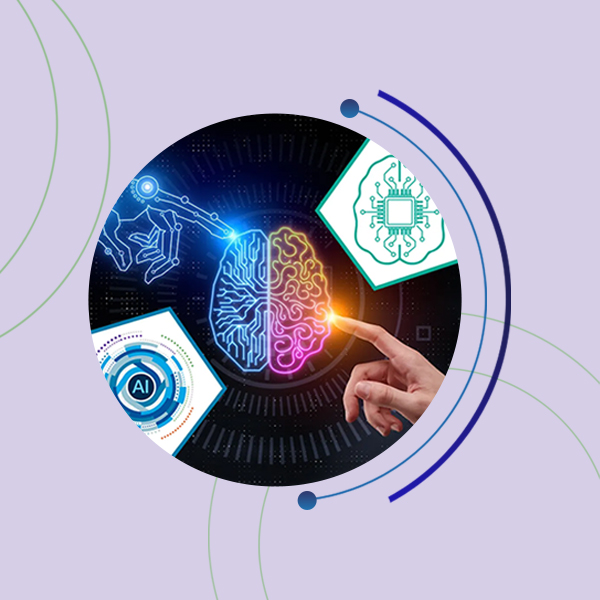What Is a Computer Vision Engineer? Unlocking the Power of Sight in Machines

In today's digital age, computers have become increasingly adept at processing and understanding visual information. This remarkable progress is primarily due to the field of computer vision, a subfield of artificial intelligence (AI) that focuses on enabling machines to extract meaningful insights from images or video footage. At the heart of this revolution lies the computer vision engineer, a skilled professional responsible for designing, developing, and implementing the algorithms and systems that empower machines to see and interpret the visual world.
We will explore the role of a computer vision engineer and delve into the fascinating world of computer vision.
Understanding Computer Vision:
Computer vision is the interdisciplinary field that combines computer science, mathematics, and AI to enable machines to acquire, process, analyze, and interpret visual data. It aims to replicate human vision capabilities by endowing machines with the ability to perceive and understand the content of images or videos. By harnessing computer vision techniques, machines can detect objects, recognize patterns, perform facial recognition, track movements, and even interpret emotions.
The Role of a Computer Vision Engineer:
A computer vision engineer is an expert who specializes in developing algorithms, designing models, and creating systems that enable machines to "see" and comprehend images or video data. These professionals possess a profound understanding of computer vision theory, image processing techniques, and machine learning algorithms. Their primary responsibilities include:
1. Research and Development:
Computer vision engineers stay at the forefront of the latest research and advancements in the field. They explore new algorithms, investigate cutting-edge techniques, and experiment with novel approaches to solve complex visual problems.
2. Algorithm Development:
They design and develop algorithms that allow machines to extract relevant information from visual data. This involves tasks such as image segmentation, object detection, image classification, and image recognition.
3. Data Preprocessing:
Computer vision engineers preprocess and clean large volumes of visual data, ensuring it is suitable for analysis and training machine learning models. They may employ techniques such as filtering, normalization, and augmentation to enhance the quality and diversity of the data.
4. Machine Learning:
These engineers leverage machine learning algorithms, such as convolutional neural networks (CNNs) and recurrent neural networks (RNNs), to train models that can recognize and interpret visual patterns and features. They fine-tune these models through iterations of training, validation, and testing.
5. Model Deployment:
Once the models are trained and optimized, computer vision engineers deploy them into production systems or integrate them into larger software frameworks. They ensure the models are efficient, scalable, and capable of handling real-time or near-real-time visual processing tasks.
Applications of Computer Vision:
The applications of computer vision are vast and diverse, with numerous industries benefit from this technology. Some notable applications include:
1. Autonomous Vehicles:
Computer vision plays a critical role in enabling self-driving cars to perceive their surroundings, detect obstacles, and make informed decisions based on the visual data received from cameras and sensors.
2. Healthcare:
Computer vision assists in medical imaging analysis, aiding in the diagnosis of diseases, identification of anomalies in scans, and the development of personalized treatment plans.
3. Surveillance and Security:
Computer vision algorithms can be employed in surveillance systems to detect and track objects or individuals, ensuring public safety and security.
4. Retail and E-commerce:
Computer vision enables automated visual product recognition, facilitating inventory management, visual search, and augmented reality (AR) applications.
5. Robotics:
Computer vision helps robots perceive their environment and manipulate objects with precision. It enables them to grasp, navigate, and interact with the world around them.
Skills and Qualifications:
Becoming a computer vision engineer requires a combination of technical expertise and a strong foundation in computer science and mathematics. Some essential skills and qualifications include:
1. Proficiency in Programming:
Strong programming skills, particularly in languages such as Python, C++, or MATLAB, are crucial for developing computer vision algorithms and implementing them efficiently.
2. Knowledge of Machine Learning:
Familiarity with machine learning concepts, frameworks (such as TensorFlow or PyTorch), and deep learning architectures is essential for training and deploying computer vision models.
3. Image Processing and Computer Vision Libraries:
Experience with popular libraries like OpenCV, scikit-image, or MATLAB's Image Processing Toolbox is beneficial for performing image preprocessing, feature extraction, and analysis.
4. Mathematics and Statistics:
A solid understanding of linear algebra, calculus, probability, and statistics is necessary for designing and optimizing computer vision algorithms.
5. Problem-Solving and Analytical Thinking:
Computer vision engineers should possess strong problem-solving skills and the ability to think analytically to tackle complex visual challenges effectively.
Conclusion:
Computer vision engineers are at the forefront of a technological revolution that empowers machines to see and interpret visual information. Through their expertise in computer science, mathematics, and AI, these professionals develop algorithms, train models, and create systems that enable machines to understand images and videos like humans. With their skills, computer vision engineers drive progress in numerous fields, from healthcare to autonomous vehicles, revolutionizing industries and transforming the way we interact with technology. As the field of computer vision continues to evolve, the role of computer vision engineers will become increasingly vital in shaping the future of AI and visual intelligence.
